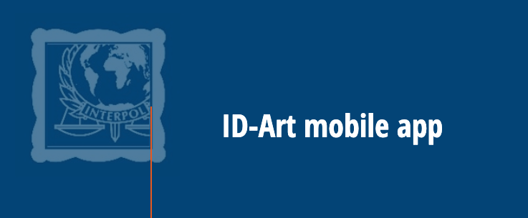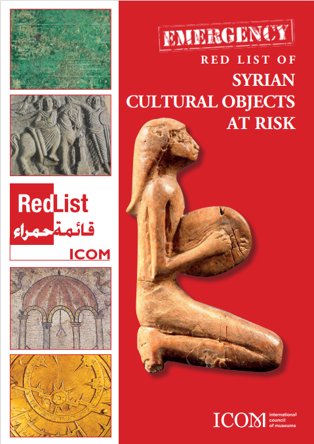Countering Object Trafficking: Tools
This page provides Toolkits and Manuals for countering trafficking in cultural objects.
If you are looking for ethical guidance relating to collecting and trade, please see the page Codes of Conduct.
If you are looking for ethical guidance relating to collecting and trade, please see the page Codes of Conduct.
Each year, it checks more than 450,000 items on the market against its database on behalf of auction houses, dealers, museums, law enforcement, and private collectors around the world. Details of items under investigation by police and Customs (from various countries) are also often sent to the ALR to be checked. The database currently holds 700,000 objects. Whilst best known for registering lost and stolen art and artefacts, the ALR set up CHARD to specifically to support the prevention of illicit trafficking of cultural property, primarily in the event of conflict and natural disaster, and to protect those objects that remain in situ but at significant risk. In conflict and post conflict situations, thefts and looting are often reported long after the event, so checks which focus purely on reported thefts are of little use. CHARD lists at risk objects which are expected to remain in country, to ensure that if such an object is offered on the market illegally, the relevant authorities are informed.
If you have cultural property inventories/information that could be at risk of damage, destruction or looting, please provide this information to the Art Loss Register to add to the CHARD database. This can include art, artefacts, and other objects from public or private collections, or excavation records. Those records may already been digitised, or may only be available in catalogues, publications or excavation records.
To register at risk objects on its database, the ALR only needs an image, description of the objects and information about where they come from (e.g. which museum, site, or collection) to permit the identification of the item if it reappears on the market.
Further information can be found at www.artloss.com/CHARD
To contact CHARD please email: CHARD (a) artloss.com
If you have cultural property inventories/information that could be at risk of damage, destruction or looting, please provide this information to the Art Loss Register to add to the CHARD database. This can include art, artefacts, and other objects from public or private collections, or excavation records. Those records may already been digitised, or may only be available in catalogues, publications or excavation records.
To register at risk objects on its database, the ALR only needs an image, description of the objects and information about where they come from (e.g. which museum, site, or collection) to permit the identification of the item if it reappears on the market.
Further information can be found at www.artloss.com/CHARD
To contact CHARD please email: CHARD (a) artloss.com
The ID-ART AppThe ID-Art mobile app is publicly available and helps to identify stolen cultural property, reduce illicit trafficking, and increases the chances of recovering stolen items. It introduces new audiences to INTERPOL's Stolen Works of Art database, containing more than 52,000 objects from 134 member countries. Read more and download the app here. |
icom database of red listsRed Lists include the categories of cultural objects that can be vulnerable to theft and trafficking. Whilst they are not actual lists of stolen items, they are inventoried objects of recognised institutions, and as such can be highly valuable in stopping the trafficking of cultural objects.
You can read more about Red Lists on the ICOM website here, or search the Database here. |
Model Export CertificatesA Model Export Certificate for Cultural objects has been drawn up by the secretariats of the World Customs Organisation and of UNESCO. These are used to establish and recognise State ownership of undiscovered cultural objects, carefully articulating the legal status of such items.
You can read more about them on the UNESCO website here. |
Object identificationObject ID is an internationally recognised documentation standard to identify and record cultural goods. It sets a standard procedure to document and describe collections of archaeological, cultural, and artistic objects. These, in turn, aids in their recovery in cases of loss or theft.
You can read more about Object Identification on the ICOM website here. |
INTERPOL Guidance - creating a national heritage unitINTERPOL have written guidelines about what individuals and countries can do to protect cultural heritage, noting that it is always possible to do more. These include guides to assessing crimes against cultural property, how to create a cultural heritage unit and a toolkit to help fight the illicit trafficking of cultural property.
More information, along with the guidance, can be found on the INTERPOL website here. |
unesco toolkitUNESCO have published a toolkit for fighting the illicit trafficking of cultural property within the European judiciary. Written with both governmental and non-governmental organisations in mind, it includes examples and experiences that offer practical steps to complement the theoretical information provided in legal texts.
You can read the toolkit on the UNESCO website here. |






